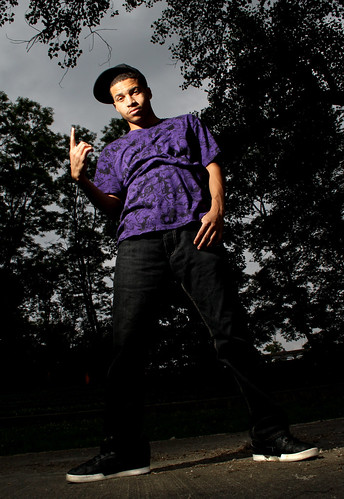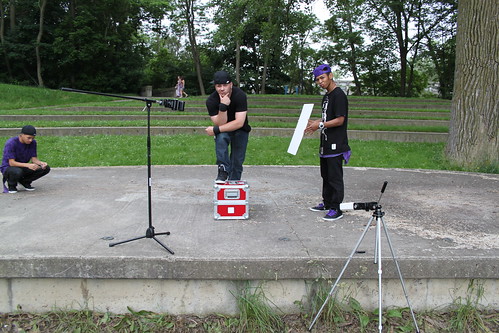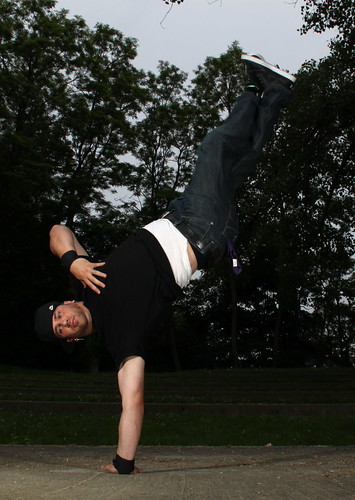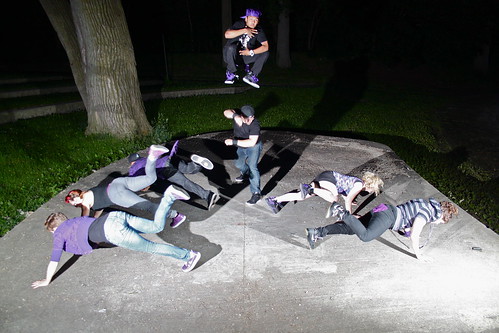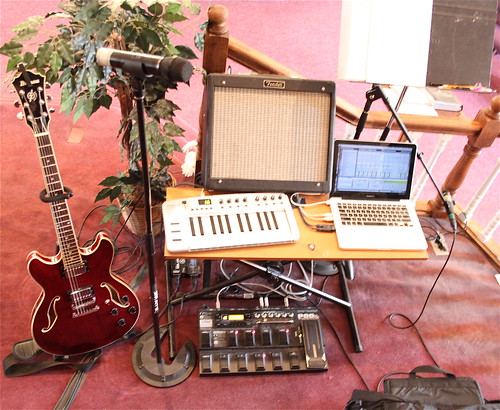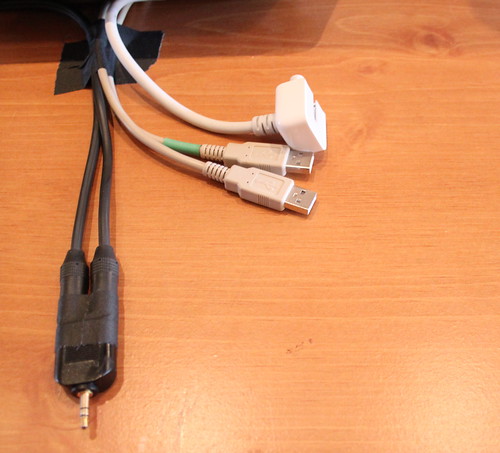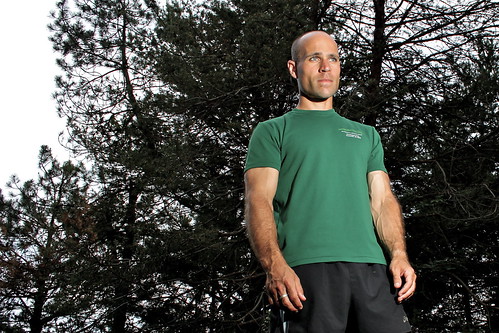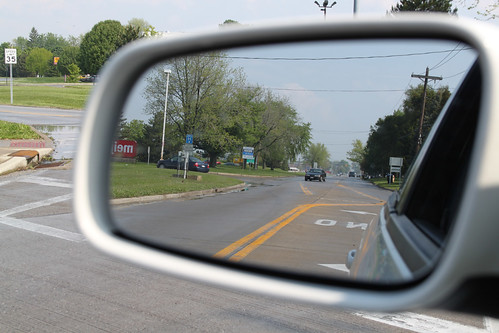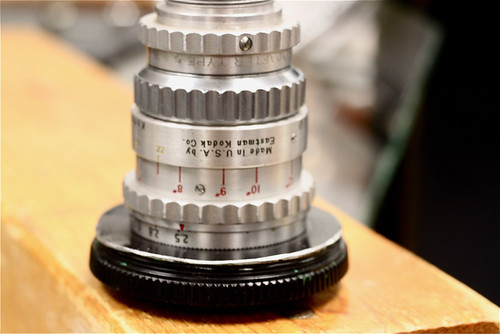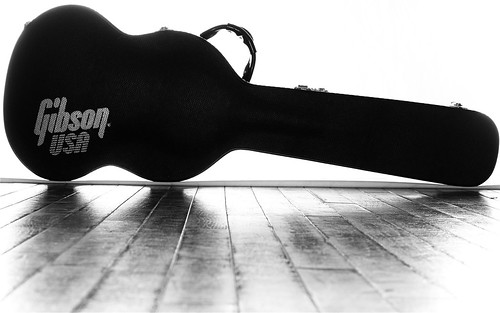This week’s post has been sitting in WordPress as a draft for almost 6 months – that’s how long I’ve been planning this one. This week, I did a photoshoot for Vertical Ambition Dance Company, a group of extremely talented dancers who are rooted in breakdance, hip-hop, ballet, and modern.
See the entire set of Vertical Ambition Dance Company photos on Flickr.
I first approached Jared, one of the VADC founders, about shooting photos of the company back in December of 2009, and it finally worked out to do a shoot this Monday evening. I knew I wanted to do this for free, as a creative collaboration (for a great read about this way of working, read this Strobist article about working for free).
I was lucky to have had a great chance to watch 3 or 4 hours of the “Studio Photography with Zach Arias” workshop on Creative Live as it was re-aired on Sunday night, so I was extremely inspired going into the shoot. I’ve been a big fan of Zach’s photography for a long time, as well as the sharing and teaching he does.
Before I ever picked up the camera, I looked at Flickr months ago for inspiration. Here are a couple of shots that I dug:

http://www.flickr.com/photos/knottyy/3056461129/
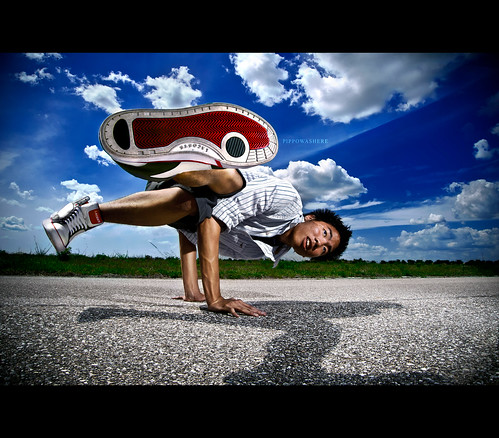
http://www.flickr.com/photos/pippowashere/4521930600/
(PLEASE NOTE: The two photos above were NOT taken by me – they are photos from others on Flickr!).
Several things I noticed right away about many of the breakdance photos were extreme wide-angle shots, dramatic poses, and lots of low and close shooting angles. I knew I wanted to nail some of these, but also wanted some nice portraits of each dancer. I decided to shoot these basic portraits first as a way to get to know each of the dancers and get some easy shots in first. Here are a few of those portraits:
Here’s a setup shot showing the basic setup for these – one flash for the main key light, and another tightly-snooted flash to focus light directly on the box.
Here’s a “photo aware” shot showing both Jared (the main subject) and Shane (one of the VADC dancers who did a GREAT job of assisting me with lights & reflectors!).
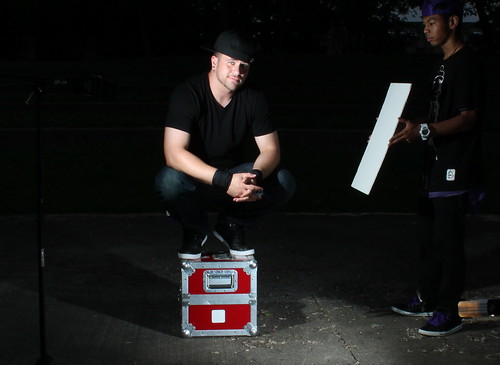
These were all taken at Frog Island park in Ypsilanti, on the concrete stage that sits on one end of the park. This was a great location – the concrete worked as a great texture, and it was a nice, level surface for the dancers. The mosquitoes were a bit of a pain (summer nights!) and we all sweated a bunch, but it was worth it in the end.
Here’s another setup, showing how we were using the location, and a few of the resulting shots:
The final big shot of the night was a group shot where most of the crew dove to the side while Jared launched Shane up into the air. I never ended up with a shot I completely liked, but it turned out well enough.
Here’s the setup:
And the result:
After we’d packed up and headed back to the parking lot to leave, I remembered that I wanted to get a quick photo of me with the crew, so I set a single flash down on my minivan’s roof, popped the camera on the tripod, and jumped in the frame.
Overall, I had a fantastic time on this shoot – it’s maybe the most fun I’ve ever had taking photos. The main reason I’m going these photoshoots is to improve my skills (along with having fun!). I believe a big part of getting better is reflecting on what worked and what needs to change.
Here are the things I felt I did well:
- I brought almost all the gear I’d need (stands, clamps, ladder). A
second mic stand adapter would have been good (so I could use my mic stands for the flashes instead of having to use a tripod for one of them). For this shoot, a pushbroom would have also been helpful (lots of debris on the concrete stage). - I had a vision/plan and executed it well.
- I engaged with the crew well – I gave pretty good directions, had a
series of shots in mind & got all of them that I wanted to. - I remembered to get setup shots and a self-portrait with the crew at the end.
- I shot good angles and compositions
Here are some things I’d change:
- I’d shoot in RAW instead of shooting JPGs – since I have to wait for my flashes to recharge anyway, the slight extra time required for shooting RAW files would be well worth it. There were times during the post-processing that I wish I’d had the flexibility that a RAW file can provide.
- I need to pay more attention to the histogram and LCD for fine-tuning exposure,
especially in body details. There were some shots where the highlights were too hot, and some where there was too much shadow. - I’ll always bring extra batteries from here out – I had a flash die part-way through due to dead batteries and was reduced from 3 flashes to only 2.
- I’m going to try shooting tethered to my laptop for my next session. It might not have worked well on this shoot (lots of movement around an outdoor set) but I’d like to give it a try.
- I need to remember that light temperature/color is controllable via gels on the flashes – I got too caught up in light placement/exposure and forgot about color temperature.
- I need to build a pair of DIY variable power controls for my Vivitar 283s in order to get more flexibility out of them. Luckily, there are easy-to-follow plans available (look for these as a future 52 things project!).
See the entire set of Vertical Ambition Dance Company photos on Flickr.


